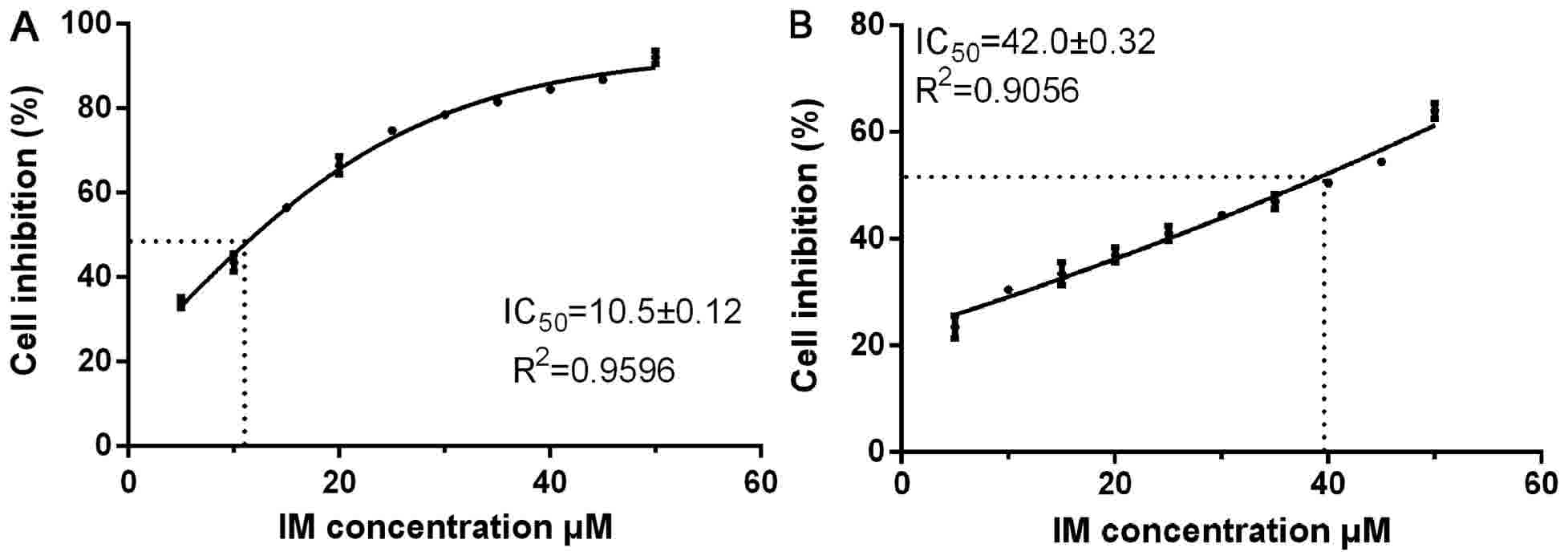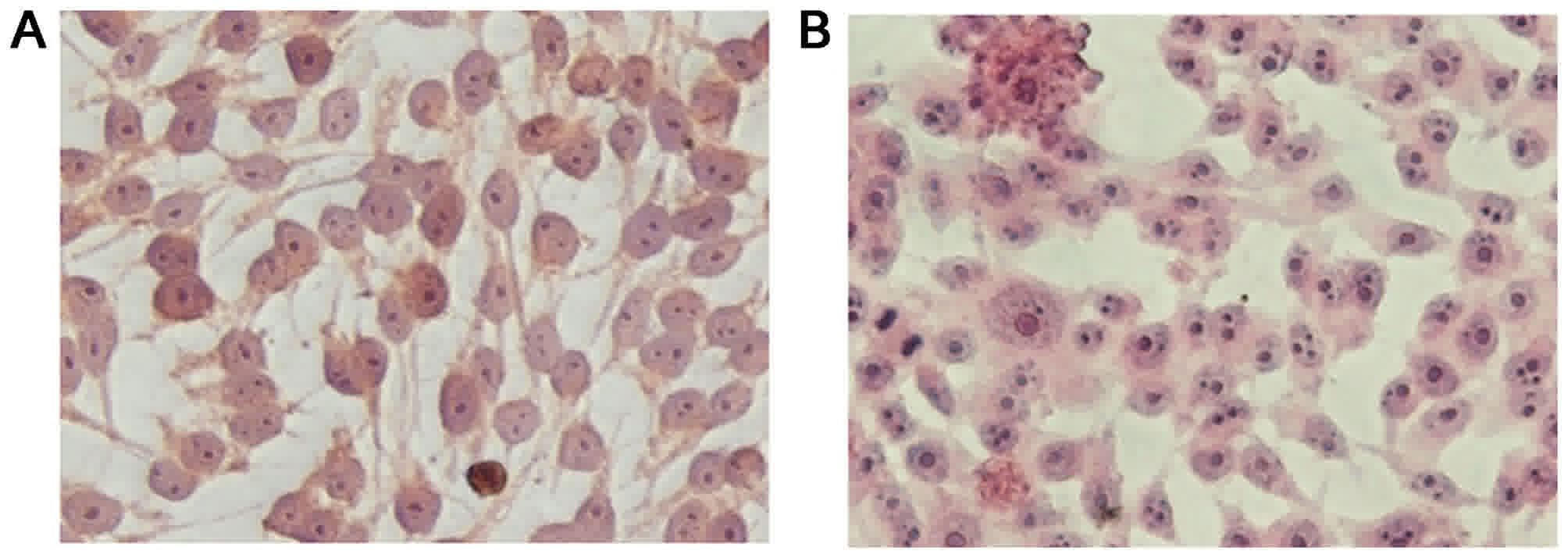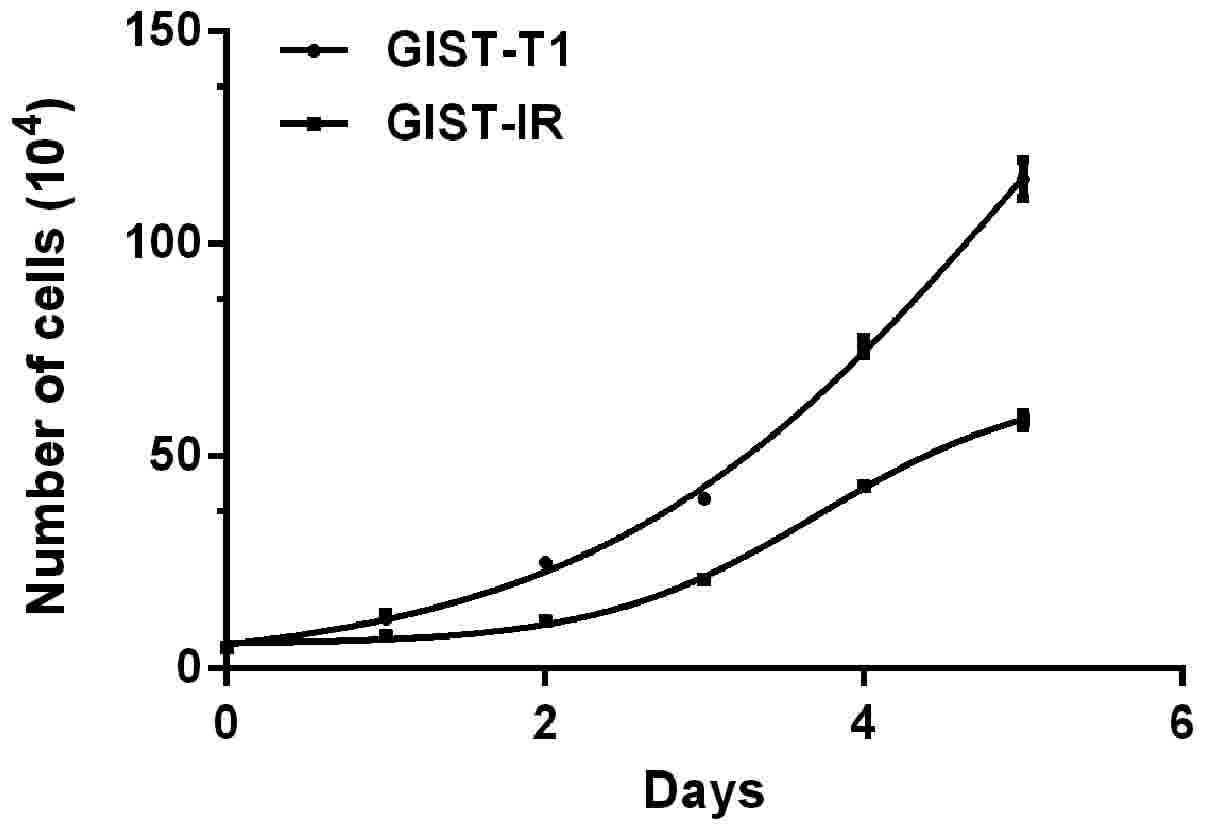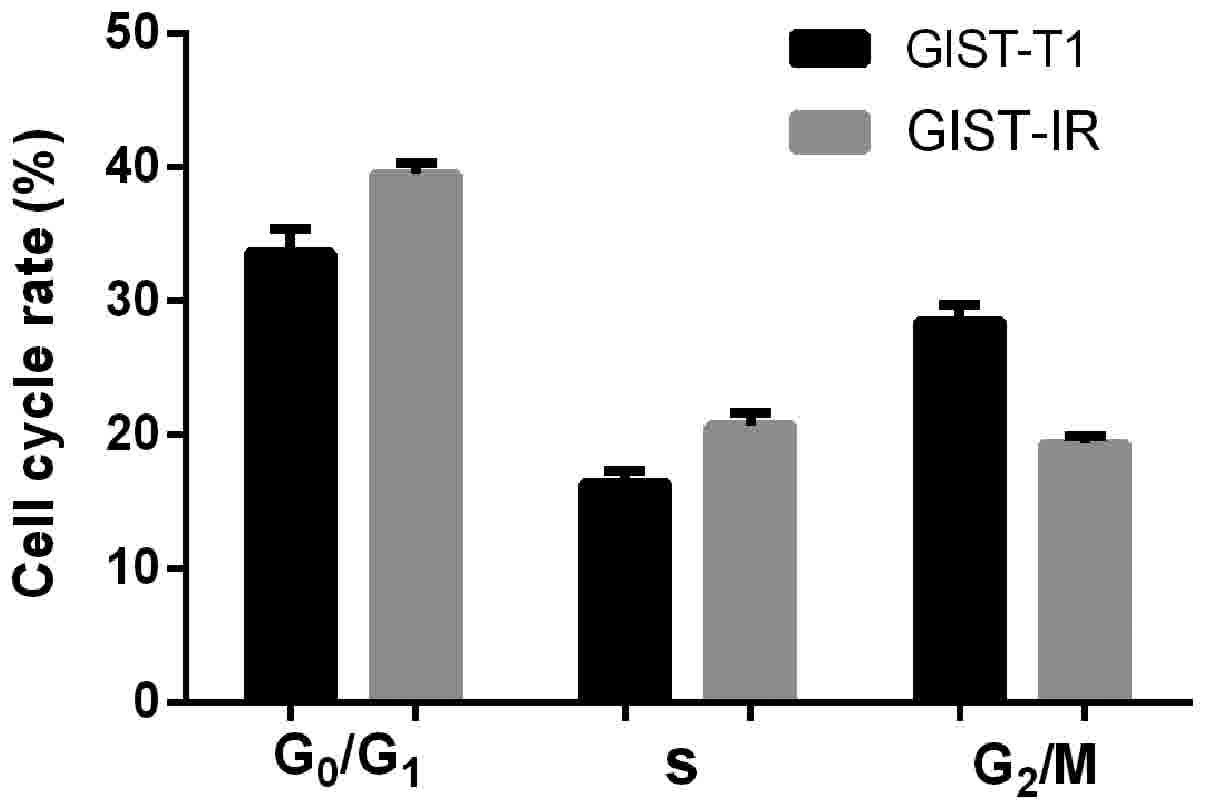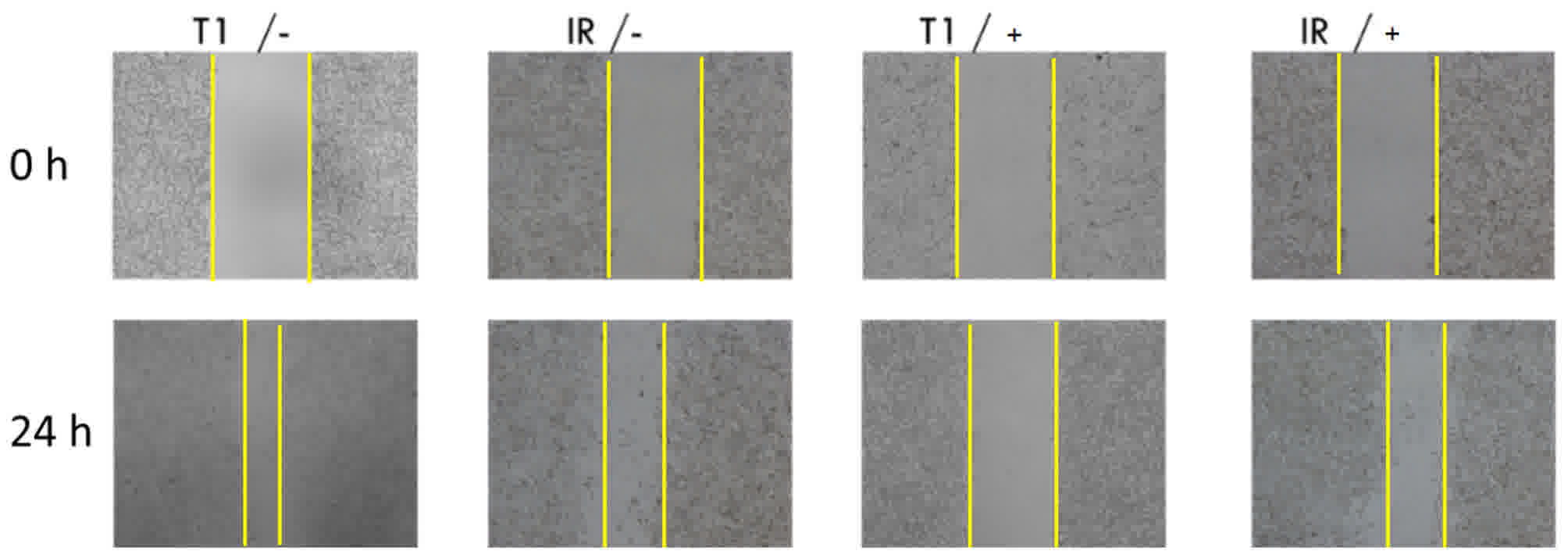|
1
|
Milhem M and Deutsch JM: Imatinib dosing
in gastrointestinal stromal tumors (GISTs): When, how much, and how
long. Curr Clin Pharmacol. 10:311–320. 2015. View Article : Google Scholar : PubMed/NCBI
|
|
2
|
Lee JH, Kim Y, Choi JW and Kim YS:
Correlation of imatinib resistance with the mutational status of
KIT and PDGFRA genes in gastrointestinal stromal tumors: A meta
analysis. J Gastrointestin Liver Dis. 22:413–418. 2013.PubMed/NCBI
|
|
3
|
Yan L, Zou L, Zhao W, Wang Y, Liu B, Yao H
and Yu H: Clinicopathological significance of cKIT mutation in
gastrointestinal stromal tumors: A systematic review and meta
analysis. Sci Rep. 5:137182015. View Article : Google Scholar : PubMed/NCBI
|
|
4
|
Yang J, Ikezoe T, Nishioka C, Takezaki Y,
Hanazaki K, Taguchi T and Yokoyama A: Long term exposure of
gastrointestinal stromal tumor cells to sunitinib induces
epigenetic silencing of the PTEN gene. Int J Cancer. 130:959–966.
2012. View Article : Google Scholar : PubMed/NCBI
|
|
5
|
Serranogarcia C, Heinrich MC, Zhu M, Raut
CP, Eilers G, Ravegnini G, Demetri GD, Bauer S, Fletcher JA and
George S: In vitro and in vivo activity of regorafenib (REGO) in
drug-resistant gastrointestinal stromal tumours (GIST). Vet Radiol
Ultrasound. 54:365–372. 2013.PubMed/NCBI
|
|
6
|
Corless CL, Barnett CM and Heinrich MC:
Gastrointestinal stromal tumours: Origin and molecular oncology.
Nat Rev Cancer. 11:865–878. 2011. View
Article : Google Scholar : PubMed/NCBI
|
|
7
|
Prakash S, Sarran L, Socci N, DeMatteo RP,
Eisenstat J, Greco AM, Maki RG, Wexler LH, LaQuaglia MP, Besmer P
and Antonescu CR: Gastrointestinal stromal tumors in children and
young adults: A clinicopathologic, molecular, and genomic study of
15 cases and review of the literature. J Pediatr Hematol Oncol.
27:179–187. 2005. View Article : Google Scholar : PubMed/NCBI
|
|
8
|
Frolov A, Chahwan S, Ochs M, Arnoletti JP,
Pan ZZ, Favorova O, Fletcher J, von Mehren M, Eisenberg B and
Godwin AK: Response markers and the molecular mechanisms of action
of Gleevec in gastrointestinal stromal tumors. Mol Cancer Ther.
2:699–709. 2003.PubMed/NCBI
|
|
9
|
Chou TY, Chiu CH, Li LH, Hsiao CY, Tzen
CY, Chang KT, Chen YM, Perng RP, Tsai SF and Tsai CM: Mutation in
the tyrosine kinase domain of epidermal growth factor receptor is a
predictive and prognostic factor for gefitinib treatment in
patients with non-small cell lung cancer. Clin Cancer Res.
11:3750–3757. 2005. View Article : Google Scholar : PubMed/NCBI
|
|
10
|
Takahashi T, Elzawahry A, Mimaki S,
Furukawa E, Nakatsuka R, Nakamura H, Nishigaki T, Serada S, Naka T,
Hirota S, et al: Genomic and transcriptomic analysis of imatinib
resistance in gastrointestinal stromal tumors. Genes Chromosomes
Cancer. 56:303–313. 2017. View Article : Google Scholar : PubMed/NCBI
|
|
11
|
Cao G, Li J, Shen L and Zhu X:
Transcatheter arterial chemoembolization for gastrointestinal
stromal tumors with liver metastases. World J Gastroenterol.
18:6134–6140. 2012. View Article : Google Scholar : PubMed/NCBI
|
|
12
|
Hsueh YS, Lin CL, Chiang NJ, Yen CC, Li
CF, Shan YS, Ko CH, Shih NY, Wang LM, Chen TS and Chen LT:
Selecting tyrosine kinase inhibitors for gastrointestinal stromal
tumor with secondary KIT activation-loop domain mutations. PLoS
One. 8:e657622013. View Article : Google Scholar : PubMed/NCBI
|
|
13
|
Xu J and Cao H: Molecular mechanism and
therapeutic strategy for resistance to tyrosine kinase inhibitors
in targeted treatment of gastrointestinal stromal tumors. Zhonghua
Wei Chang Wai Ke Za Zhi. 16:288–291. 2013.(In Chinese). PubMed/NCBI
|
|
14
|
Buleje SJ, Yábar BA, Guevara-Fujita M and
Fujita R: Molecular and genetic features of gastrointestinal
stromal tumors (GIST). Rev Gastroenterol Peru. 32:394–399.
2012.PubMed/NCBI
|
|
15
|
Patel S: Exploring novel therapeutic
targets in GIST: Focus on the PI3K/Akt/mTOR pathway. Curr Oncol
Rep. 15:386–395. 2013. View Article : Google Scholar : PubMed/NCBI
|
|
16
|
Heinrich MC, Griffith D, McKinley A,
Patterson J, Presnell A, Ramachandran A and Debiec-Rychter M:
Crenolanib inhibits the drug-resistant PDGFRA D842V mutation
associated with imatinib-resistant gastrointestinal stromal tumors.
Clin Cancer Res. 18:4375–4384. 2012. View Article : Google Scholar : PubMed/NCBI
|
|
17
|
Zhu HL, Liu T, Meng WT and Jia YQ:
Establishment of an imatinib resistance cell line K562R and its
resistant principia. Sichuan Da Xue Xue Bao Yi Xue Ban. 38:22–26.
2007.(In Chinese). PubMed/NCBI
|
|
18
|
Zhen S, Wang H, Leng HJ, Tong WJ, Tao D
and Pan YL: Establishment of an imatinib resistance cell line and
Identification of biological characteristics. Chin J Experimental
Surg. 29:550–551. 2012.(In Chinese).
|
|
19
|
Nakatani H, Araki K, Jin T, Kobayashi M,
Sugimoto T, Akimori T, Namikawa T, Okamoto K, Nakano T, Okabayashi
T, et al: STI571 (Glivec) induces cell death in the
gastrointestinal stromal tumor cell line, GIST-T1, via endoplasmic
reticulum stress response. Int J Mol Med. 17:893–897.
2006.PubMed/NCBI
|















